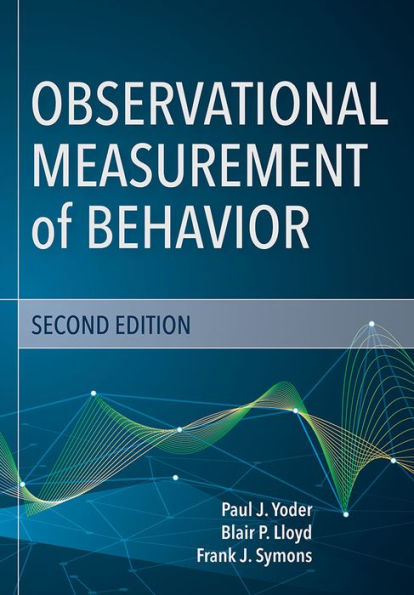An essential textbook for anyone preparing to be a researcher, this comprehensive volume introduces graduate students to key principles of observational measurement of behavior. Based on a course the highly respected authors taught at Vanderbilt University and the University of Minnesota, this text delves deeply into a highly effective approach to observational measurement: systematic observation.
Students will master both the theoretical principles of systematic observation and recommended research methods and techniques. They'll learn from practical examples that illustrate complex concepts, clear explanations of recommended research methods, definitions of key terms, and exercises and assignments that help them practice putting principles into action. Online companion materials include two free licenses for proprietary observational software that students can use to complete the exercises and assignments in this book.
Ideal for use in research methodology courses in diverse fields—including special education, communication sciences, psychology, and social work—this fundamental graduate text will prepare future researchers to skillfully collect, summarize, and communicate their observations of children's behavior.
STUDENTS WILL:
- Fully understand key methods of observational research and measurement
- Get comprehensive information on both foundational and advanced topics
- Learn from real-world examples based on the authors' extensive experience
- Apply specific recommendations for effective techniques and best practices
SELECTED TOPICS COVERED: validity and reliability * representativeness * measurement theory * behavior sampling and coding * observer training * metrics of observational variables * modifying and designing coding manuals * sequential analysis * generalizability theory
ONLINE COMPANION MATERIALS: To enhance their courses, instructors will get a full package of online materials, including two licenses for observational software, video clips students can use to practice coding behaviors, a suggested schedule for a semester-long course, exercises for students, and assignments with corresponding grading rubrics.
An essential textbook for anyone preparing to be a researcher, this comprehensive volume introduces graduate students to key principles of observational measurement of behavior. Based on a course the highly respected authors taught at Vanderbilt University and the University of Minnesota, this text delves deeply into a highly effective approach to observational measurement: systematic observation.
Students will master both the theoretical principles of systematic observation and recommended research methods and techniques. They'll learn from practical examples that illustrate complex concepts, clear explanations of recommended research methods, definitions of key terms, and exercises and assignments that help them practice putting principles into action. Online companion materials include two free licenses for proprietary observational software that students can use to complete the exercises and assignments in this book.
Ideal for use in research methodology courses in diverse fields—including special education, communication sciences, psychology, and social work—this fundamental graduate text will prepare future researchers to skillfully collect, summarize, and communicate their observations of children's behavior.
STUDENTS WILL:
- Fully understand key methods of observational research and measurement
- Get comprehensive information on both foundational and advanced topics
- Learn from real-world examples based on the authors' extensive experience
- Apply specific recommendations for effective techniques and best practices
SELECTED TOPICS COVERED: validity and reliability * representativeness * measurement theory * behavior sampling and coding * observer training * metrics of observational variables * modifying and designing coding manuals * sequential analysis * generalizability theory
ONLINE COMPANION MATERIALS: To enhance their courses, instructors will get a full package of online materials, including two licenses for observational software, video clips students can use to practice coding behaviors, a suggested schedule for a semester-long course, exercises for students, and assignments with corresponding grading rubrics.

Observational Measurement of Behavior
272
Observational Measurement of Behavior
272Paperback(New Edition)

Product Details
| ISBN-13: | 9781681252469 |
|---|---|
| Publisher: | Brookes Publishing |
| Publication date: | 05/01/2018 |
| Edition description: | New Edition |
| Pages: | 272 |
| Product dimensions: | 7.00(w) x 10.00(h) x 0.00(d) |
